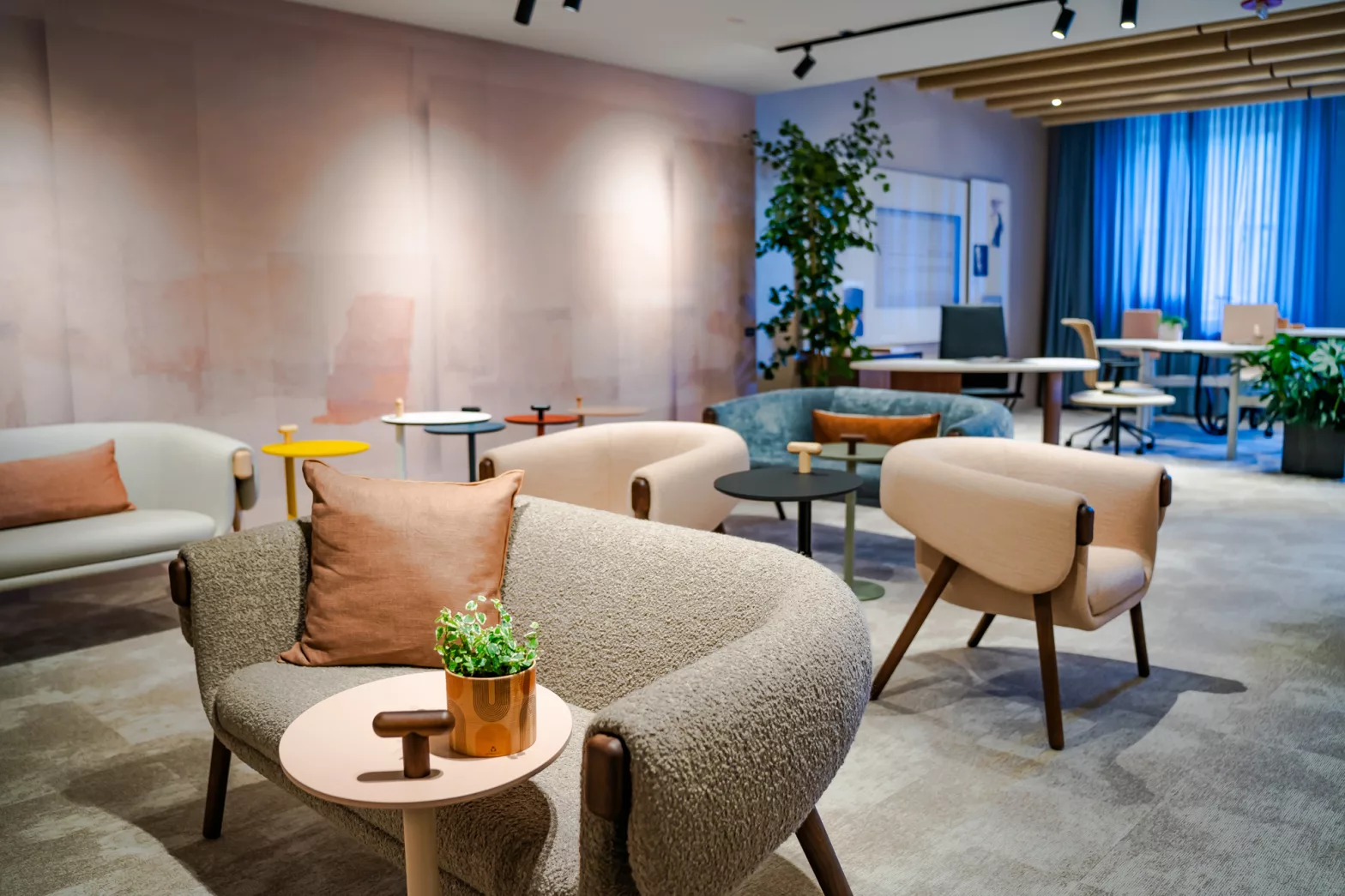We round up the hot trends from NeoCon, including nature’s colors, sustainability, inclusivity, local art, and a new kind of conference room.
When it comes to today’s commercial interior design trends, it’s all about color, texture, comfort and sustainability.
Those trends were on full display at the renowned NeoCon (National Exposition of Contract Interior Furnishings show) that wrapped up in June at Chicago’s famed Merchandise Mart. This year’s show simply felt different, offering a more energized feeling that people who attended New York City’s design week reported in May.
“There was a vibrancy this year,” says Cheryl Durst, CEO of the International Interior Design Association and a keynote speaker at the event. “We don’t always hear this with trade shows, but there was a joyousness that was really wonderful to see.”
Today’s designs effuse grace and elegance, says Durst. She saw a lot of highly touchable fabrics like hemp and linen, materials that are easy to clean and colors drawn from nature. Those colors include calming blues, citrusy yellows, sands, beiges and tone on tone creams.
“I saw so much green this year. All shades of green, from deep emeralds to light seafoam greens,” she says. Designers are also using pops of color, including oranges, reds and red-pink fuschia.
Trade show visitors buzzed about the Best of Competition winner British designer Yinka Ilori’s collaboration with Momentum, the largest commercial textiles and wallcoverings supplier. The bright colors of the display screamed “happy,” while blending neutral color palettes and materials that are low VOC and PFAS free, or without per- and poly-fluoroalkyl substances, which are synthetic compounds that are hazardous to humans and the environment.
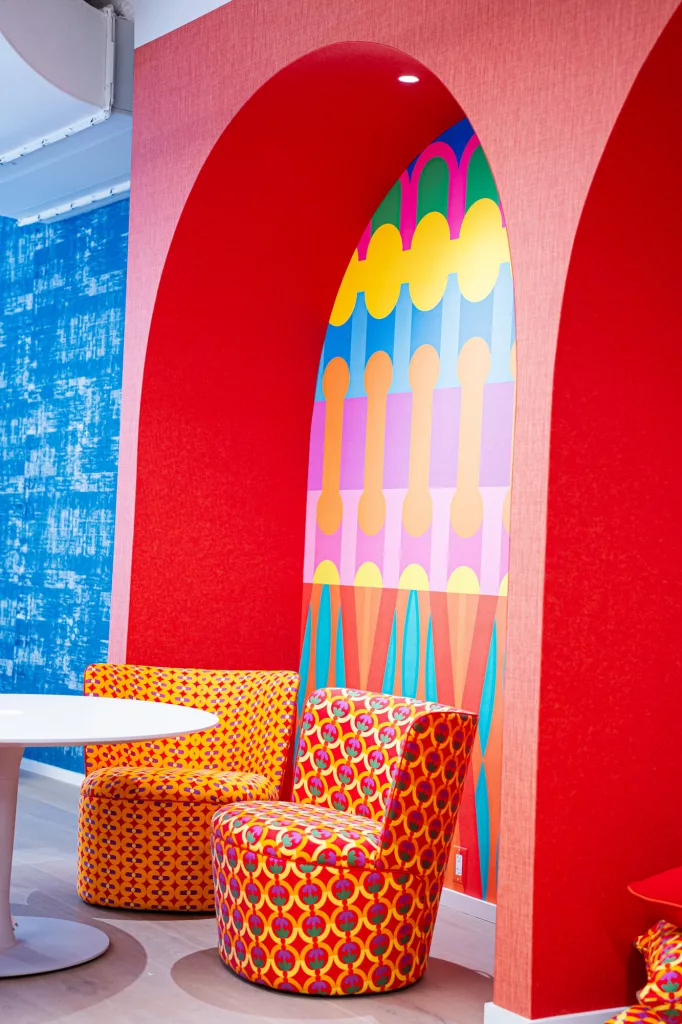
Modern Office Designs that Toy with “Neuroaesthetics”
Commercial designers are playing with the nascent field of neuroaesthetics, or looking at how color, sound and art impact peoples’ brains, emotions and spatial experiences on a subconscious level. Research into sights and sounds isn’t new, but neuroaesthetics takes things further by harnessing these elements to promote well-being, productivity and enrichment.
“Neuroscience-informed design shows us that science can guide us to good choices,” said Sally Augustin, fellow of American Psychological Association and principal of Design With Science. Numerous studies show that beautiful and functional design is tied to happiness at work.
Biophilic design remains an important trend, especially as it’s easier for people’s minds to visually process patterns and shapes found in nature. Shaw’s Contract unveiled Arctic Escape, a collection of rugs inspired by frost-covered icy landscapes. Research also suggests that warm colors are associated with feelings of joy, and cool colors correlate with feelings of calm.
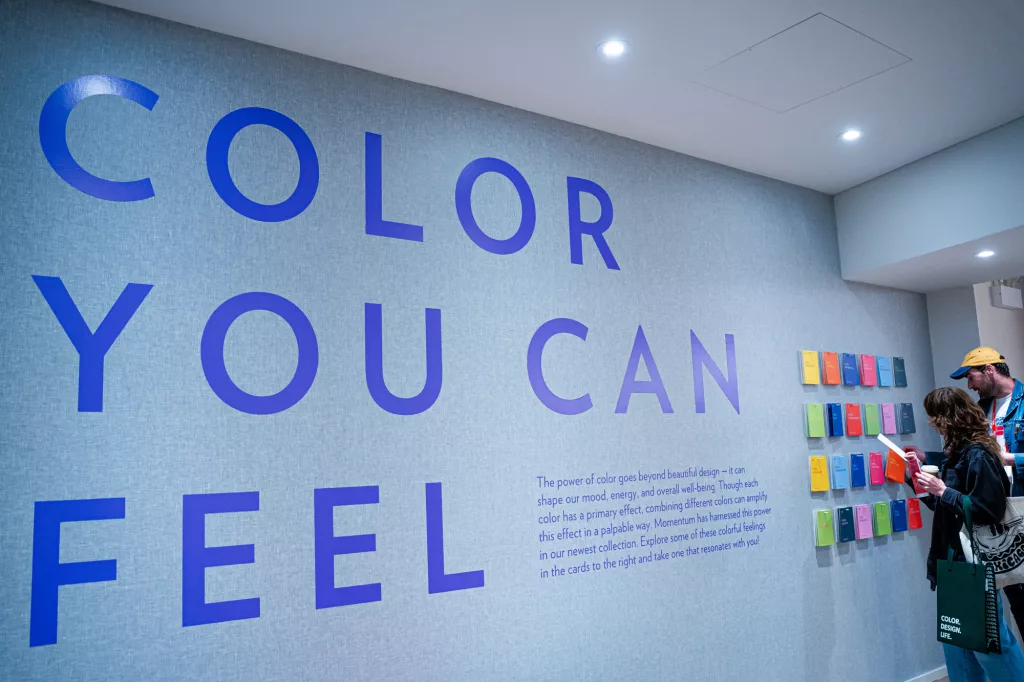
Design that Focuses on the Senses
Neurodivergent design and wellness is also top of mind, given the rise of mental health concerns and burnout at work and the growing recognition that 15% to 20% of the population identifies as neurodivergent. This means that people may process information differently than what is typical and may have a variety of diagnoses, from autism disorders and ADHD to dyslexia.
The focus has prompted designers to approach the office from an even more human-centered, inclusive lens about everything in design that engages the senses, including texture, sound, layout, color and shape and function of furniture. They’re also gravitating towards furniture that is mobile and reconfigurable, whether that is office pods, prefabricated meeting rooms, or moveable desks and modular furniture. See this Tomorrow piece for more on neurodivergence design.
A New Twist for the Conference Room
Comfort and community were also big themes this year, as leaders attempt to draw people back to the office, drive collaboration and make them comfortable. Designers are introducing more variations in work table and work surface height, from traditional desks to lab height surfaces and flexible options that allow you to sit or stand. When it comes to seating, soft benches are edging out chairs. That might be a functional sofa where a person can pull a table up to do work.
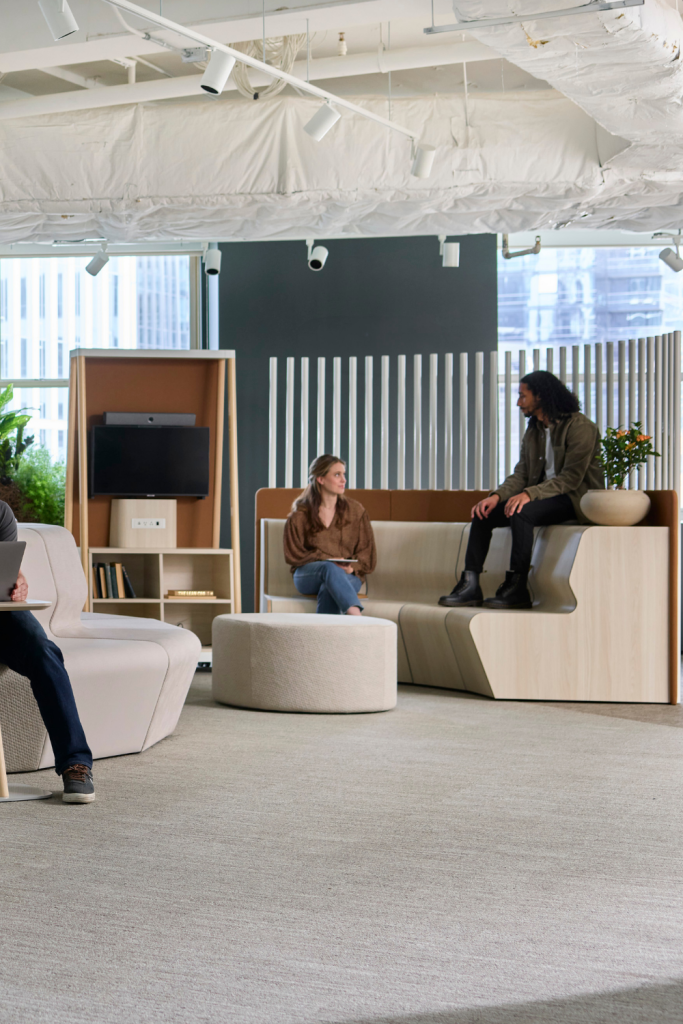
Expect a greater emphasis on gathering spaces rather than traditional conference rooms going forward as well. If there’s a room in a conference room, designers are installing soft seating or benches so that people don’t have to sit at a conference table. It gives the space more of a living room feel and offers various viewing vantage points for video calls. It turns formal conference rooms into gathering spaces, says Durst.
“Conference rooms have taken on a whole new personality,” she says.
Moving the Office Outside
Offices are also taking cues from really well done residential outdoor spaces and introducing outdoor furniture that’s sturdy but beautiful.
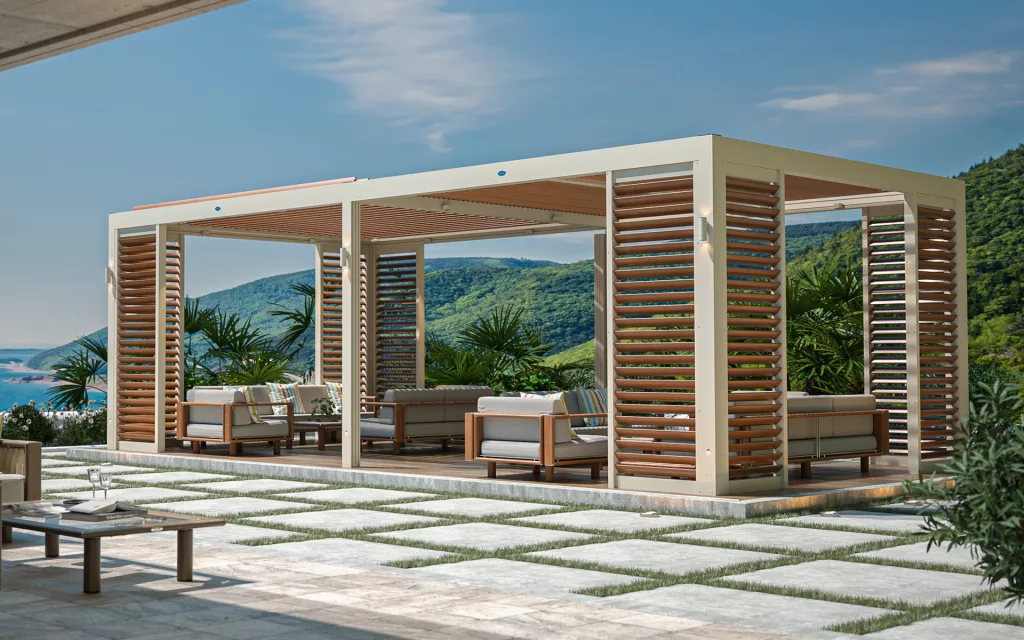
“It’s a holdover from the pandemic, but more business is being done outside,” says Durst. “Outside isn’t just a place to have your lunch anymore. You can have your 11 o’clock meeting outside but you need furniture that’s going to withstand the weather.”
Building a Sense of Place with Local Art
Designers are also adding more personality to spaces by working with local art buyers and art consultants to bring in local art.
“When you’re in an office, it’s not anonymous. There’s an identity, there’s a personality, especially when you can promote a local artist,” she says. “This also speaks to inclusivity.”
The Need for Circular Office Furniture
This year, more manufacturers touted their give-back programs and environmental sustainability features, and more people discussed secondary market vendors to help people adequately dispose of their furniture.
People are looking at office space with a short-term lens, and they’re looking at options for recycling, reusing, repairing or donating furniture to protect the environment. This is especially important when $20 billion is spent on new furniture a year, and 17 billion pounds of office assets are dumped in U.S. landfills each year.
Durst says more people are mindful about reducing their carbon footprint and looking at the sustainability of materials, asking where they came from and how they positively or negatively impact people and the environment. One NeoCon exhibitor, Hayworth’s Design Lab, focused on circular design, emphasizing sustainability at each step of the product’s life cycle from production to re-use. OFS dedicated a portion of their showroom to their partnership with One Tree Planted enabling every guest a chance to donate a tree for reforestation projects, adding to the company’s already 250,000 trees planted to date. Andreu World’s Circular Design Challenge also called on industry professionals to adopt greener practices such as eco-design, zero waste management, carbon neutrality and sustainable material selection.
“You can’t really have a conversation about aesthetics and functionality without having a conversation about sustainability,” says Durst. “It’s the cradle to cradle aspect of design.”
